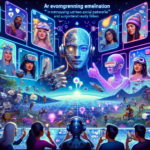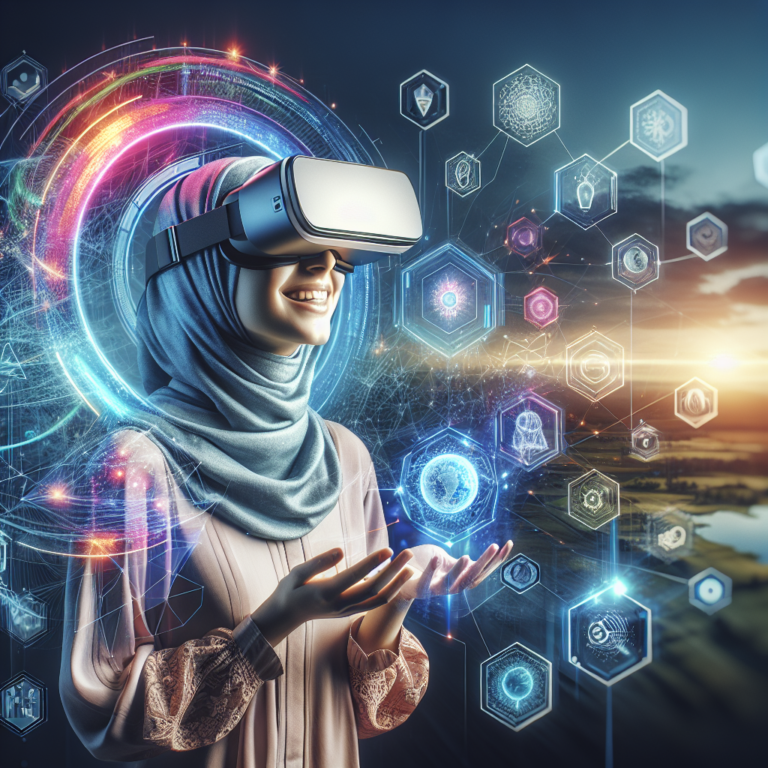Revolutionizing Virtual Reality: How AI Can Safeguard Your Experience 🌟
Introduction: A New Age of Virtual Reality
With the rapid evolution of technology, Virtual Reality (VR) has transformed from a niche gaming experience into an immersive world that impacts various domains, including education, training, therapy, and social interaction. But while the potential of VR is boundless, so too are the risks associated with its use. What if we could harness the incredible power of Artificial Intelligence (AI) to monitor user behavior in VR? This innovation could pave the way for enhanced safety and well-being, allowing individuals to enjoy their virtual adventures without fear or anxiety.
AI Virtual Reality Safety : The Importance of User Safety in VR
As VR technology becomes more embedded in our lives, ensuring user safety and well-being is paramount. Here are some reasons why:
- Physical Hazards: Users often lose awareness of their real-world surroundings, leading to potential injuries.
- Psychological Impact: Immersion can evoke strong emotions, which might lead to anxiety or distress.
- Social Interactions: VR can foster unrealistic social dynamics, contributing to feelings of isolation or discomfort.
With these challenges in mind, implementing AI as a protective measure becomes not just beneficial, but essential.
How AI Can Monitor User Behavior in VR
1. Real-Time Environmental Awareness
AI Virtual Reality Safety : One of the most significant advantages of integrating AI in VR is its capacity for real-time monitoring of a user’s environment and interactions. Imagine this scenario:
While navigating a VR landscape, AI could assess your physical space, ensuring there are no obstacles around you—like furniture or pets—that could pose risks. If the AI detects potential hazards, it could issue a gentle nudge or warning, keeping you safe while minimizing interruptions to your gaming or learning experience. This technology not only enhances safety but also enriches user immersion.
2. Emotional Sentiment Analysis
The emotional state of users can shift rapidly in VR, whether due to intense gameplay, immersive storytelling, or social interactions. AI can play a crucial role here by:
- Analyzing Behavior: By tracking your movements, expressions, and vocal tones, AI can identify signs of distress or discomfort.
- Providing Feedback: If a user shows significant signs of anxiety, the AI can suggest taking a break, switching activities, or even offering calming virtual environments to help mitigate stress.
This adaptive emotional intelligence not only prioritizes safety but also contributes to overall well-being during VR experiences.
3. Personalization for Enhanced Well-being
AI’s ability to learn from users’ preferences can lead to a more personalized VR experience. Here are some ways this personalization can promote safety and well-being:
- Customized Experiences: Based on learning about individual users, AI can craft experiences that match their comfort levels—offering intense challenges or soothing environments based on personal history and mood.
- Routine Monitoring: Over time, AI can create a user profile that monitors stressors or triggers, providing regular check-ins or modifying experiences to support well-being.
The Ethical Dimensions of AI Monitoring
Of course, while implementing AI for monitoring user behavior in VR sounds promising, it invites various ethical considerations. Users must feel comfortable and secure knowing that their data is being collected and analyzed. Here are essential principles to uphold:
- Transparency: Developers should clearly communicate what data is being collected and how it will be used.
- User Control: Users should have the ability to opt-in or out of behavioral monitoring based on their preferences.
- Data Security: Measures must be in place to protect personal data, ensuring it is stored and used responsibly.
AI Virtual Reality Safety : The Future of AI-Enabled VR Experiences
As the technology behind VR and AI continues to evolve, the possibilities for creating safer and healthier environments are almost limitless. Here are some exciting prospects for the future:
- Community Engagement: AI could help facilitate healthier social interactions by guiding users towards positive engagements and away from toxic behavior.
- Health Monitoring: Integration with wearable technology could allow real-time health monitoring—tracking heart rates or stress levels—and adjusting the VR experience accordingly.
- Preventative Measures: By gathering data over time, AI could identify patterns that might predict negative outcomes, allowing for proactive adjustments before the user is aware of any distress.
Conclusion: Embracing AI for a Safer VR Future
The incorporation of AI into VR monitoring presents a thrilling opportunity to redefine how we engage with virtual environments. By prioritizing user safety and well-being through intelligent behavior analysis, we can enhance immersion while safeguarding individuals from potential risks. As we stand on the brink of this new technological frontier, it’s critical that developers, users, and stakeholders collaborate to build a virtual world that is not only exciting but also safe and supportive.




0 Comments